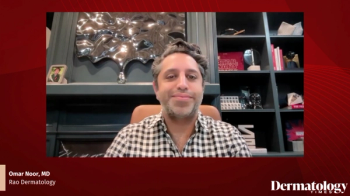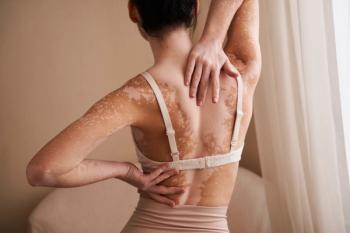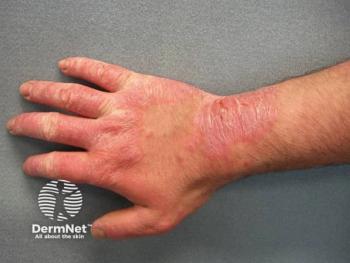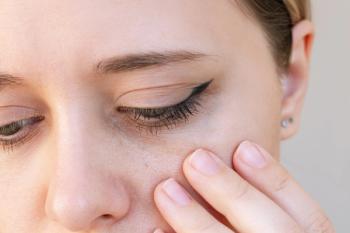
- Dermatology Times, April 2025 (Vol. 46. No. 04)
- Volume 46
- Issue 04
Expert Insights From AAD 2025
Key Takeaways
- Delgocitinib cream showed significant efficacy in treating moderate to severe chronic hand eczema, with "super responders" achieving substantial symptom relief by week 16.
- Antibiotic stewardship in acne treatment is crucial, with tetracyclines playing a significant role due to their antimicrobial and anti-inflammatory properties.
From our April issue: Unlock exclusive AAD 2025 insights from top dermatology experts—what you missed and what’s next.
The 2025 American Academy of Dermatology (AAD) Annual Meeting brought together dermatology clinicians from around the globe in Orlando, Florida, for 5 days of clinical updates and networking. From March 7 to 11, this year’s AAD meeting featured more than 330 sessions with countless topics and therapeutic focuses.
Dermatology Times was in Orlando conducting interviews with presenters to discuss the key data and take-home points they shared. If you could not attend or want a content refresher, below are some highlights shared at AAD. Learn more about delgocitinib for chronic hand eczema (CHE); antibiotic stewardship during acne treatment; emerging trends in aesthetics, radiofrequency, and ultrasound-based technologies; and controversies in lasers and infantile hemangiomas from April Armstrong, MD, MPH; Christopher Bunick, MD, PhD; Jeanine Downie, MD; Karan Lal, DO, MS; and Denise Metry, MD.
Super Responders With Delgocitinib for CHE
Armstrong, a board-certified dermatologist and professor and chief of dermatology at UCLA in California, presented late-breaking data on delgocitinib cream (Anzupgo; LEO Pharma) for treating moderate to severe CHE.1 The latest post hoc data analysis evaluated the treatment response in patients with moderate to severe chronic CHE treated with delgocitinib for 16 weeks compared with patients treated with a vehicle cream in the phase 3 DELTA 1 (NCT04871711) and DELTA 2 (NCT04872101) trials. The subgroup in the post hoc analysis was defined as patients with a deep, consistent, and/or maintained treatment response.
Super responders were defined as those achieving few to no symptoms in pain, itch, and quality-of-life impact by week 16 of the pivotal trial. Approximately 50% of patients met at least 1 of these deep response criteria, demonstrating substantial relief from disease burden. A significant proportion of patients who achieved Investigator’s Global Assessment-CHE 0 (clear) by week 16 maintained their results even after stopping delgocitinib.2
“About a quarter of the patients have achieved either significant improvement in their pain or itch score or maintained at least 75% improvement in their severity through not only at week 16 but also in the weeks prior to week 16. We call this consistent response as a part of the definition of super responders,” Armstrong said.
Improving Acne Treatment Through Antibiotic Stewardship
Bunick, associate professor of dermatology and translational biomedicine at Yale School of Medicine in New Haven, Connecticut, and Dermatology Times’ editor in chief, presented “Updates on Antibiotics for Acne and Rosacea” at the annual meeting. In his presentation, Bunick reviewed the evolving role of antibiotics in acne management. His presentation focused on the importance of antibiotic stewardship while outlining the latest recommendations from the 2024 AAD acne guidelines.3
Bunick emphasized the efficacy of new triple-combination topical therapies that include clindamycin and benzoyl peroxide. These formulations have demonstrated strong safety profiles and significant clinical benefits for patients with acne. Although topical treatments are a key part of acne treatment, oral antibiotics, particularly tetracyclines, are still widely prescribed.
According to Bunick, tetracyclines account for approximately 75% of oral antibiotic prescriptions in dermatology. He stressed that dermatologists should be well versed in their use, not only for their antimicrobial properties but also for their potent anti-inflammatory effects, which play an important role in acne management.
“When it comes to oral antibiotics, one of the topics I focused on is the fact that antibiotic stewardship is needed. I also like to say that we are honorary gastroenterologists in dermatology because the antibiotics we prescribe affect the gut. We know that the gut microbiome is so important to human health,” Bunick said.
Tattoo Ink Risks, MultiFrax Laser, and More
Downie, a board-certified dermatologist and founder of Image Dermatology in Montclair, New Jersey, presented “Pearls From the Masters of Dermatologic Surgery” at AAD. In her session, Downie discussed critical updates on tattoo ink safety, new dermatologic technologies, biostimulators, and emerging trends in aesthetics and longevity science.
Regarding tattoo ink safety, Downie first highlighted the increasing prevalence of tattoos and the dermatologic complications associated with them. With nearly 38% of women and 27% of men in the US having tattoos, dermatologists frequently encounter tattoo-related reactions. She noted that 20% to 30% of tattoo inks are contaminated with microorganisms, adding that only 10% of ink contents are labeled.
Next, Downie introduced the MultiFrax, a handheld fractional laser combining 1550-nm and 1927-nm wavelengths for skin resurfacing and pigmentation treatment. The portable device offers versatility for treating fine lines, wrinkles, acne scars, and surgical scars across all skin types.
Last, Downie introduced the use of PRX, a topical collagen biostimulator, that has gained popularity in the US after success in Europe.
“PRX has a 33% TCA [trichloroacetic acid]. It has hydrogen peroxide and about 5% kojic acid. And together, the TCA, because of the hydrogen peroxide, penetrates, but not as much, and so you don’t wind up with the hyperpigmentation you might see in a 33% TCA in somebody with my skin tone otherwise,” Downie said regarding PRX as a needle-free, painless option for skin rejuvenation.
Complications With Radiofrequency and Ultrasound-Based Technologies
Lal, a double board-certified pediatric and cosmetic dermatologist at Affiliated Dermatology in Scottsdale, Arizona, the pediatric dermatology director for the Omni Dermatology Residency Program, a cosmetic teaching faculty member at the Northwell Health Residency Program in New York, and a Dermatology Times Editorial Advisory Board member, presented “Complications of RF and U/S Devices” at AAD. Radiofrequency (RF) and ultrasound (U/S)–based technologies are generally considered safe. However, complications arise with increased use, requiring clinicians to review prevention and management, according to Lal.
RF technologies include monopolar, bipolar, and multipolar devices for skin tightening and fat reduction. Although effective, these treatments carry risks, particularly in patients with skin of color. Lal shared 3 key tips when discussing RF treatments: (1) Patients with darker skin tones should be treated with insulated RF microneedling tips to prevent epidermal injury and burns, (2) Monopolar RF requires a grounding pad to maintain safe energy flow, and (3) Despite manufacturer claims, not all devices are safe for patients with skin of color.
Ultrasound treatments, including high-intensity focused ultrasound (HIFU) and high-frequency ultrasound, are noninvasive skin-tightening modalities. Although they do not penetrate the skin barrier, improper technique can lead to significant complications. Lal stressed the importance of avoiding burns with HIFU, protecting ocular structures, and preventing nerve injury around the mouth and brow.
“A lot of these treatments are what we say, ‘generally regarded as safe,’ because they’re being employed in the public all the time. People are using them all the time. The issue is, once something is being done over and over again, you are going to have complications. Now, you can’t avoid the complications once they happen, but learning how to fix these complications is huge,” Lal said.
Controversies in Lasers and Infantile Hemangiomas
Metry, a dermatologist practicing at Driscoll Children’s Hospital in Corpus Christi, Texas, tackled the role of laser use in treating children and other controversial issues in lasers and infantile hemangiomas at AAD. The use of lasers in treating infantile hemangiomas, particularly larger, segmental lesions, remains a topic of debate among dermatologists, Metry told Dermatology Times in an exclusive interview. Although laser therapy has been a mainstay in managing port-wine birthmarks, its role in segmental infantile hemangiomas has historically been limited due to concerns over ischemia and ulceration, she explained.
Although it can be difficult to distinguish between a port-wine birthmark and a segmental infantile hemangioma, early differentiation is crucial, as treatment approaches differ significantly, Metry added. She reminded attendees that port-wine birthmarks are well demarcated, solid, and uniform, whereas hemangiomas tend to be more telangiectatic and evolve over time. Misclassification can lead to inappropriate treatment plans.
“When you have a hemangioma—an infantile hemangioma that’s larger, more what we call segmental, not round, patterned, often syndromic—what is the role of laser in those children? And especially the timing: Should we be thinking about potentially lasering earlier than we traditionally have?” Metry said.
References
- Armstrong A. “Super responders” following treatment with delgocitinib cream 20mg/g in a subgroup of patients with moderate to severe chronic hand eczema. Poster presented at: 2025 American Academy of Dermatology Annual Meeting; March 7-11, 2025; Orlando, FL.
- LEO Pharma presents new late-breaking delgocitinib cream data for the third consecutive year at AAD 2025. News release. LEO Pharma. March 8, 2025. Accessed March 8, 2025.
https://www.businesswire.com/news/home/20250308530521/en/LEO-Pharma-Presents-New-Late-Breaking-Delgocitinib-Cream-Data-For-the-Third-Consecutive-Year-at-AAD-2025 - Reynolds RV, Yeung H, Cheng CE, et al. Guidelines of care for the management of acne vulgaris. J Am Acad Dermatol. 2024;90(5):1006.e1-1006.e30. doi:10.1016/j.jaad.2023.12.017
Articles in this issue
8 months ago
Dermatology Times April 2025 Print Recap8 months ago
How to Best Support Women With Menopausal AcneNewsletter
Like what you’re reading? Subscribe to Dermatology Times for weekly updates on therapies, innovations, and real-world practice tips.



















